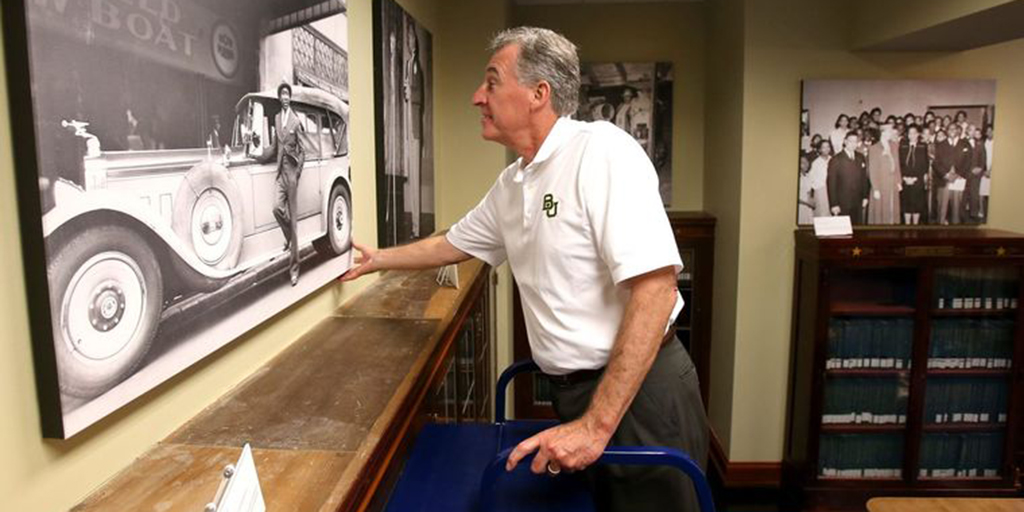Three ways Baylor is preserving and sharing Waco history

This year marks the 130th anniversary of Baylor’s move to Waco. In 1886, Baylor left Independence and relocated north up the Brazos River to the city we now call home; together, the university and the city have lived through and been shaped by the moments, both big and small, that have defined Waco for more than a century.
One way Baylor and the community are enriched by each other is through the preservation of our shared history — and the stories of people of varied backgrounds who have left an indelible impact in the life of Waco, Texas. From the Waco Mammoth National Monument to Baylor’s research park, the BRIC, which is located in the old General Tire plant, Baylor has played a large part in discovering and retaining some significant parts of Waco’s past. And of course, for Baylor’s Texas Collection and Institute for Oral History, preservation is an ongoing endeavor.
But you’re likely familiar with those big efforts. Here are three more recent examples of how Baylor faculty, students and alumni are currently working to preserve our hometown’s history:
* Waco History App — The Waco History App is a virtual museum of Waco and McLennan County history, developed by the folks at Baylor’s Institute for Oral History and Texas Collection. The app features nearly 120 entries that cover the breadth of area history, from the famous 1953 tornado to the individual stories of people or businesses that shaped our community. Dr. Stephen Sloan, BBA ’90, MA ’98, associate professor of history and director of the Institute for Oral History, worked with history students to conduct and sift through interviews, find photos, and write stories for the entries, which can be accessed via a map that allows users to find historic locations, or by a topical search.
* Ordinary People, Extraordinary Lives exhibit — Photos can be powerful storytellers, and there’s nowhere else on campus with more historic photos than the Texas Collection. This semester, they’re displaying photos that tell the story of African Americans in Waco and the state of Texas from the late 1800s to the mid-1970s. “Ordinary People, Extraordinary Lives” is on display through December; among the subjects are Waco native and World War II hero Doris Miller, early African American pioneers at Baylor, and more.
* What About Waco? documentary — Last summer, we told you about Chris Charles Scott, BA ’04, a Baylor alum whose film series on the history of Shreveport was honored as the Louisiana documentary of the year. This year, Scott has focused his lens on Waco, and is currently shooting a multi-episode documentary about the history of the community he called home during his time at Baylor. Scott anticipates episodes focusing on the tornado, the Waco Suspension Bridge, Waco history from 1916-18, and Camp MacArthur, a World War I Army training camp once housed in Waco. The documentary is expected to be finished late next year.
“I love that we can give people an opportunity to engage with our history. In an age where every place is becoming the same place, your local history is extremely important. It gives identity and builds connection to the community,” Sloan says. “If we can understand and appreciate the history of a place, we’re more invested in the current health and future direction of it. That’s good for Baylor, and that’s good for Waco.”
Sic ’em, Baylor historians!

